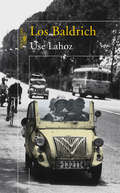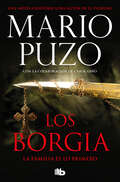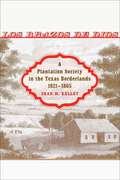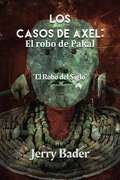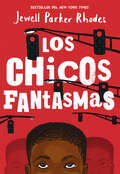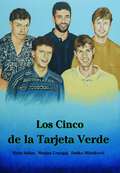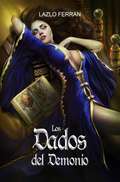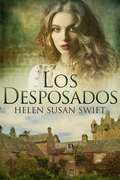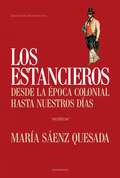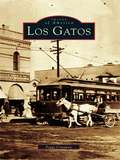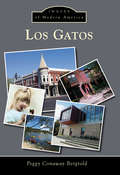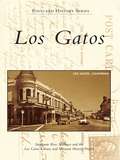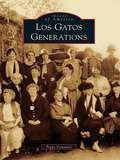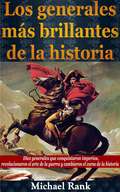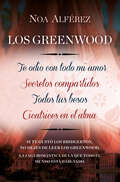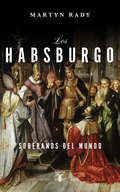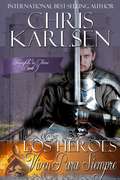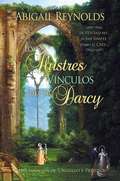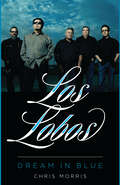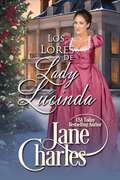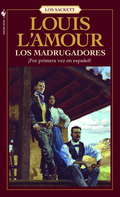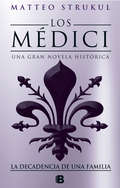- Table View
- List View
Los Baldrich
by Use LahozUn relato agridulce de la España del último siglo que posee la maestría de las grandes sagas clásicas. Desde muy joven, Jenaro Baldrich tiene claros sus objetivos: formar una familia, fundar un negocio en la maltrecha Barcelona de posguerra y llegar lo más alto posible. Nada impedirá que se dedique a la conquista de sus ideales, aunque en el camino olvide el sueño de un clan unido y bien asentado. Esta es la crónica de una ambición, la historia de un hombre capaz de todo menos de traicionarse a sí mismo. El retrato certero de una familia acomodada en la que los hijos deberán huir de un hogar opresivo antes de que el noble apellido Baldrich acabe con ellos. La codicia y la incomunicación, pero también la generosidad, el amor y la lujuria dan cuerpo a esta fascinante novela de Use Lahoz. Reseñas:«Los Baldrich me ha devuelto la Barcelona de mi infancia, la de Rodoreda; un Madrid genuino y el gusto por la novela.»Luis Eduardo Aute «Me ha gustado sobremanera la novela Los Baldrich, retrato progresivo de Barcelona a través de una familia industrial y descompuesta.»Carlos Herrera, XL Semanal «Un estilo narrativo vivaz y con abundantes marcas que delatan la impregnación de García Márquez.»Ricardo Senabre, El Cultural «Algunas escenas de gran ambición literaria permanecen en la memoria del lector.»Manuel Longares«Lahoz demuestra una singular habilidad para narrar y un excelente manejo del lenguaje. Espero su próxima novela, pues aquí hay autor para rato.»Marta Rivera de la Cruz «Lahoz ha construido una novela en ocasiones realmente poderosa.»Juan Antonio Masoliver Ródenas, La Vanguardia «Hay recogida una materia narrativa de enorme interés por el choque que enfrenta la figura del padre autoritario y la necesidad que unos hijos van teniendo de construir su habitación propia, con deserciones y tragedias incluidas. Se lee bastante bien, atrapa la atención por algunas escenas celebradas por el lector como procedentes de un escritor con fuerza.»José María Pozuelo Yvancos, ABCD
Los Borgia
by Mario PuzoLA PRIMERA GRAN FAMILIA DEL CRIMEN. UNA HISTORIA DE BRUTALIDAD Y TRAICIÓN. UN JUEGO CUYO PRECIO ES LA MUERTE. Del legendario autor de El Padrino llega una novela de la familia criminal italiana original, una historia de corrupción, traición, asesinatos, romance y, por supuesto... familia. Italia, siglo XV. El Renacimiento está en pleno apogeo, anunciando una nueva edad de oro en Europa. Pero donde hay oro, hay poder. Y hay quien está dispuesto a hacer cualquier cosa para hacerse con él. Este es el mundo de Alejandro VI, el Papa Borgia, y su familia, que trama y conspira para sus propios fines. Esta es la historia de su lucha por mantener el control sobre Italia, de su ambición y sed de poder. Esta es la peligrosa vida de los Borgia, crueles y cautivadores, en la que sus enemigos más letales pueden estar mucho más cerca de lo que esperan.
Los Brazos de Dios: A Plantation Society in the Texas Borderlands, 1821--1865 (Conflicting Worlds: New Dimensions of the American Civil War)
by Sean M. KelleyHistorians have long believed that the "frontier" shaped Texas plantation society, but in this detailed examination of Texas's most important plantation region, Sean M. Kelley asserts that the dominant influence was not the frontier but the Mexican Republic. The Lower Brazos River Valley -- the only slave society to take root under Mexican sovereignty -- made replication of eastern plantation culture extremely difficult and complicated. By tracing the synthesis of cultures, races, and politics in the region, Kelley reveals a distinct variant of southern slavery -- a borderland plantation society.Kelley opens by examining the four migration streams that defined the antebellum Brazos community: Anglo-Americans and their African American slaves who constituted the first two groups to immigrate; Germans who came after the Mexican government barred immigrants from the U.S. while encouraging those from Europe; and African-born slaves brought in through Cuba who ultimately made up the largest concentration of enslaved Africans in the antebellum South. Within this multicultural milieu, Kelley shows, the disparity between Mexican law and German practices complicated southern familial relationships and master-slave interaction. Though the Mexican policy on slavery was ambiguous, alternating between toleration and condemnation, Brazos slaves perceived the Rio Grande River as the boundary between white supremacy and racial egalitarianism. As a result, thousands fled across the border, further destabilizing the Brazos plantation society. In the1850s, nonslaveholding Germans also contributed to the upheaval by expressing a sense of ethnic solidarity in politics. In an attempt to undermine Anglo efforts to draw a sharp boundary between black and white, some Germans hid runaway slaves. Ultimately, Kelley demonstrates how the Civil War brought these issues to the fore, eroding the very foundations of Brazos plantation society. With Los Brazos de Dios, Kelley offers the first examination of Texas slavery as a borderland institution and reveals the difficulty with which southern plantation society was transplanted in the West.
Los Casos de Axel: El Robo del Siglo
by Jerry BaderEl investigador privado Axel Webb es contratado para recuperar los objetos perdidos del robo de Pakal en 1984 en el Museo de Arqueología de Ciudad de México. El caso se pone feo cuando su cliente es asesinado. El Robo del Siglo En la Nochebuena de 1984, dos estudiantes de veterinaria mexicanos que habían abandonado la carrera irrumpieron en el Museo Nacional del Antropología. Robaron más de cien antiguos tesoros mayas hallados en la tumba de K'inich Janaab' Pakal, un descubrimiento que rivaliza con Tutankamón en belleza, riqueza y significado cultural. El robo se conoció como El Robo del Siglo. La incompetencia y la corrupción de las autoridades hicieron que el caso se enfriara. El Museo ni siquiera sabía cuántos artefactos habían sido robados. Cuatro años más tarde, la detención de un narcotraficante de Acapulco lleva a la policía a arrestar a varios sospechosos, entre ellos uno de los ladrones. La mayoría de las reliquias fueron recuperadas, pero no todas. Se cree que el segundo ladrón, que desapareció poco después del robo, escapó con los tesoros restantes. Durante cuarenta años, no se descubrió nada nuevo sobre el segundo ladrón ni sobre las reliquias desaparecidas del rey Pakal. Hasta que Gabriela Flores, una escritora mexicana que vive en Toronto, presenta un libro sobre la civilización maya a un agente literario local, Anthony Brizzi. En su reunión con Brizzi, Gabriela se fija en un expositor de cristal que alberga lo que Gabriela cree que son algunos de los objetos desaparecidos del robo de Pakal. Gabriela es sobrina del exsubinspector de la Policía Federal Benito Pérez, amigo del investigador privado de Toronto Axel Webb. Gabriela contrata a Axel con la ayuda de su tío para descubrir si los objetos de la vitrina del agente literario son los tesoros mayas desaparecidos. Antes de que Axel pueda siquiera empezar, el agente literario es asesinado. Y los objetos de la vitrina de cristal desapare
Los Chicos Fantasmas (Ghost Boys Spanish Edition)
by Jewell Parker Rhodes"MOMENTO DE DESPERTAR".ME VOLTEO. ¿QUIÉN DIJO ESO? AL OTRO LADO DE LA CALLE, LO VEO. TENUE COMO LA LLOVIZNA. ¿UN FANTASMA?¿COMO YO? Jerome, de doce años, es la más reciente víctima, asesinada por un policía blanco que confunde su pistola de juguete con una amenaza. Como fantasma, él observa la devastación que se ha desatado en su familia y comunidad a raíz de lo que ven como un asesinato injusto y brutal. Una vez más, Jewell Parker Rhodes entrelaza hábilmente capas históricas y sociopolíticas en una historia apasionante y conmovedora sobre cómo los niños y las familias enfrentan las complejidades del mundo actual. &“TIME TO WAKE UP.&”I SPIN AROUND. WHO SAID THAT? ACROSS THE STREET, I SEE HIM. WISPY LIKE SOFT RAIN. A GHOST? LIKE ME?Twelve-year-old Jerome is the latest victim, shot by a white police officer who mistakes his toy gun for a threat. As a ghost, he observes the devastation that&’s been unleashed on his family and community in the wake of what they see as an unjust and brutal killing. Once again Jewell Parker Rhodes deftly weaves historical and sociopolitical layers into a gripping and poignant story
Los Cinco de la Tarjeta Verde: Se atrevieron a desafiar a la NBA.
by Marjan Crnogaj Rytis Sabas Duško MiletkovićDurante las últimas décadas del siglo XX, un grupo de personas del baloncesto (jugadores, entrenadores, ejecutivos, cazatalentos y agentes) participó en una de las transferencias de capital humano y conocimiento más extraordinarias en la historia del deporte. Este fenómeno llevó a la fusión de dos esferas del baloncesto completamente separadas, una en los Estados Unidos y la otra principalmente en Europa del Este, en un todo único e integrado. La nueva legislación de la FIBA de principios de abril de 1989 permitió a los jugadores de la NBA competir para sus equipos nacionales, lo que de repente "abrió una ventana" a los principales ases internacionales como Dražen Petrović, Šarūnas Marčiulionis, Vlade Divac, Alexander Volkov y Žarko Paspalj. Fue la NBA la que con entusiasmo "abrió la puerta" a este grupo único de jugadores, brindándoles una oportunidad única en la vida de ganarse la vida en los Estados Unidos demostrando sus cualidades en batallas definitivas de baloncesto contra la flor y nata de la cosecha. de los jugadores de baloncesto del mundo. Este grupo, apodado 'Los Cinco de la Tarjeta Verde' por el legendario columnista deportivo de Sports Illustrated Jack McCallum, no sólo demostró su clase bajo el constante escrutinio de los ejecutivos de la NBA, sino que mantuvo su deseo y compromiso, allanando el camino para todos los futuros jugadores europeos de la NBA.
Los Dados del Deminio
by Lazlo FerranUn ex espía despierta en una mazmorra de la que no se puede escapar del siglo XIII de la cual es imposible escapar; ¡sin luz, sin alimento, sin agua y sin salida! Los Dados del Demonio sigue al primer libro de esta serie: Ordo Lupus y la Puerta del Templo. Un historiador con poderes paranormales ecuentra unos códigos secretos tejidos en el mantel de un altar y aprende a usar los portales del tiempo. Pero en unas vacaciones la hechicera Georgina secuestra a su esposa, quien está lisiada.Georgina está aliada con una secta de asesinos y la lleva a la Francia medieval en esta lúgubre novela de suspenso. Arriesgando su vida persiguió a los asesinosy despertó en un "oubliette", una mazmorrasin salida. Está oscuro como boca de lobo y no recuerda su nombre ni quién lo encarceló. ¿ Serán sus captores sus archienemigos, las serpientes bíblecas que cambian de aspecto? Los dados están tirados. ¿Donde está, quien lo puso ahí, como puede escapar? ¿Podrá enfrentarse al temor de una oscuridad total? Cambios de forma física, viajar a través del tiempo y conflicto militar se unen en una novela de suspenso paranormal con una trama polifacética. Si le gustó El Código de Da Vinci le encantará Ordo Lupus Los Dados del Demonio. Categorías: ficción, suspenso, paranormal, historia, madieval, romance, síquico, militar, picaresco, entretenido y vampiro.
Los Darcy de Derbyshire
by Abigail Reynolds Teresita García Ruy SanchezUn inesperado encuentro entre Elizabeth Bennet y el Sr. Darcy, una historia de familia y una excursión a una elevada formación rocosa tienen inesperadas consecuencias.
Los Desposados
by Helen Susan Swift Elisa PedrazProcedente de las tierras altas de Escocia, Alison Lamont viaja a Edimburgo en busca de un marido, pero todo lo que encontrará serán problemas. Expulsada del popular baile de Lady Forres por robar un beso, tiene que huir de una revuelta en el conocido casco antiguo para terminar pasando la noche con Will Kemp, un excéntrico constructor de barcos. El problema radica en que mientras ella se enamora perdidamente de Mr.Kemp, su tía desea que se case con el repulsivo John Forres. Alison decide tomar medidas drásticas para resolver el dilema, lo que incluye un largo viaje por las nevadas Pentland Hills. Pero, ¿de quién es la huella misteriosa que aparece a la entrada de la cabaña?, y ¿qué secreto esconde Mr.Kemp?
Los Estados Unidos (Grade 5, Edicion Para Texas)
by Candy Dawson Boyd C. Frederick Risinger Geneva Gay Rita Geiger James B. Kracht Valerie Ooka Pang Sara Miranda SanchezA Spanish Social Studies textbook.
Los Estancieros
by María Sáenz QuesadaAdmirados en sus orígenes, denostados más tarde, pocos tienen una idea clara de cómo es y cómo ha sido uno de los grupos más poderosos de la Argentina, los estancieros de la pampa húmeda. Desde los pioneros del poblamiento rural hasta la época de "las vacas gordas"(1914), este libro aborda las distintas etapas en la proyección nacional de los estancieros, sus formas de vida, sus vínculos con la ciudad y con las clases dominantes, los modos de apropiación de la tierra, lo que se dijo de ellos, lo que pensaron de sí mismos. A través de materiales públicos, cartas, crónicas de viajes, textos literarios y entrevistas, María Sáenz Quesada construyó de manera novedosa y original en esta obra, publicada por primera vez en 1980, una pintura vívida de un sector relegado de nuestra tradición pero ineludible para nuestros presente y futuro. En esta edición, revisada y actualizada, la autora retoma el tema agropecuario desde comienzos del siglo XX hasta nuestros días, con sus crisis, sus transformaciones y sus desafíos tecnológicos. Incluye reportajes inéditos y el último enfrentamiento con el Gobierno por las retenciones, que puso en discusión, una vez más, el rico y diverso imaginario cultural en torno al campo.
Los Gatos
by Peggy ConawayNestled in the heart of a dramatic natural amphitheater formed by the Santa Cruz Mountains, Los Gatos serves as the gateway from the Santa Clara Valley to the Pacific Ocean. This happy accident of location allowed historic Los Gatos to witness a colorful parade of swashbuckling explorers, Franciscan padres, and hearty American pioneers, many of whom came to harvest virgin redwood forests from the mountains and grow fruit in exceptionally fertile soil. Los Gatos grew up around the 1850s flour mill established by Scotsman James Alexander Forbes. In 1878 the railroad arrived and was a powerful influence for more than 80 years. Named for the mountain lions that still inhabit the area, Los Gatos has reflected the expansive richness of the California Dream for 150 years.
Los Gatos (Images of Modern America)
by Peggy Conaway BergtoldA magical place to grow up and an exceptionally lovely place to live, Los Gatos has transformed from its agrarian roots to an upscale community at the southern tip of Silicon Valley. With its sublime Mediterranean climate and stunning natural setting, the town has progressed while still valiantly protecting its small town character and customs. The 1989 Loma Prieta earthquake hit Los Gatos hard, creating a devastating litany of 481 damaged homes and businesses, many of them historic. Los Gatos made the decision to rebuild and restore what had been lost, with picture-perfect results.
Los Gatos (Postcard History)
by Stephanie Ross Mathews Los Gatos Library and Museum History ProjectThe charming town of Los Gatos is nestled at the base of the Santa Cruz Mountains and is sometimes referred to as the "Gem City of the Foothills." It has inspired hundreds of postcard images through the years, many reflecting the area's abundance of natural beauty. As the town and surrounding area grew and prospered through agriculture, logging, and commerce, the local architecture and landmarks became popular subjects. Glimpses of everyday life--churches, schools, houses, and businesses--further enhanced the pictorial history the postcards represent.
Los Gatos Generations
by Peggy ConawayFrom its beginnings as a Mexican land grant, Los Gatos has been filled with promise. A beautiful natural setting attracted a fascinating population of innovators, inventors, intellectuals, and artists; those who dreamed and those who cultivated the splendid richness of the soil. A gracious integration of fruit, flowers, and a gentle, delightful climate allowed settlers to thrive and find sure success. Inevitable tragedy and troubles also beset the little settlement at the western edge of the country, especially a series of devastating fires and episodes of raw frontier violence in the 1880s. Yet through all of its history, Los Gatos has prided itself on its strong sense of community, each generation proud of its heritage and of what they accomplished. A gathering of talent graced each decade--hopeful, hardworking people who appreciated the unique combination of an ideal place and abundant opportunity existent in their corner of the "Valley of Hearts Delight."
Los Generales Más Brillantes De La Historia.
by Michael Rank Miriam Rodríguez RodrigoEste libro realiza un recorrido por las vidas de diez de los generales que han marcado el curso de la historia, diez personajes sin los cuales la sociedad en la que vivimos actualmente quizá no sería así. De forma amena, este libro describe sus hazañas, sus relaciones con la época en la que vivieron y las opiniones que sus adversarios tenían sobre ellos. Los generales cuyas vidas se relatan en este libro tienen algo en común: luchaban por ideales en los que creían firmemente y, por encima de todo, luchaban por lograr una paz duradera en los territorios bajo su influencia.
Los Greenwood (Libros 1 a 4)
by Noa AlférezUna saga romántica histórica repleta de amor y sentimientos. Si te gustó los Bridgerton, no puedes dejar de leer los Greenwod. Libro 1: Te odio con todo mi amor:«Cómo encajar en un mundo al que no perteneces, cómo asumir que lo que más odias es aquello que no puedes evitar amarObstinada, rebelde, irreverente, incontrolable. Esos eran algunos de los adjetivos con los que, Andrew Greenwood, el estricto y comedido conde de Hardwick definía a Marian Miller, o «Demonio Miller», como solían llamarla. Andrew había tenido que asumir la responsabilidad de su título y su familia demasiado pronto y no permitiría que nada ni nadie se interpusiera en su camino, pero todo se complica cuando Andrew y Marian descubren que el amor y la atracción que los une son casi tan potentes como la animadversión que los separa. Libro 2: Secretos compartidos:«¿Hasta dónde serias capaz de llegar por lealtad? ¿Serías capaz de renunciar a tu felicidad, a tu destino, al amor, y vencer tus propios miedos?». Maysie Sheldon tenía un secreto: había amado. Había amado con el alma, con esa inocencia conmovedora que impulsa a las jóvenes ingenuas a escaparse del dulce cobijo de sus sábanas en mitad de la noche para refugiarse en unos brazos cálidos, para robarle un minuto al tiempo, para arrancarle unos segundos al destino... Maysie Sheldon guardaba un gran secreto y su hermana Elisabeth compartía gustosa aquel peso. Libro 3: Todos tus besos:«¿Puede un beso ser mucho más que un beso? hay besos imposibles de olvidar, besos capaces de cambiar el curso de una vida... ».Thomas Sheperd ha luchado con ahínco durante toda su vida para labrarse un exitoso futuro, tratando de ignorar que es el hijo bastardo de uno de los duques más importantes de Inglaterra. Lo único que Thomas sabe del amor es que es capaz de destruir aquello que toca. En cambio, la bella e incomparable Caroline Greenwood está impaciente por encontrar el amor, el romanticismo, y todos esos besos con los que sueña.Un hombre que no cree en el amor y una mujer que sueña con él… Libro 4: Cicatrices en el alma:«Ella oculta las cicatrices de su rostro, él pretende esconder las de su alma atormentada rodeándose de oscuridad». Vincent Rhys había convertido la depravación en un arte. No era generoso ni humilde, y la mayoría de las veces ni siquiera era amable, a no ser que fuera en su propio beneficio. Alcohol, mujeres, peleas, juego… Cualquier vicio era aceptable si con ello conseguía adormecer unos instantes los fantasmas que lo asediaban. Vicent Rhys poseía la bella apariencia de un ángel y un alma llena de cicatrices, tan oscura como la del mismísimo diablo. Pero su pacífica existencia da un giro radical cuando un libertino de la peor calaña y un atrevido libro se cruzan en su camino.
Los Habsburgo: Soberanos del mundo
by Martyn RadyLA PRIMERA HISTORIA GLOBAL DE LA DINASTÍA QUE DOMINÓ EL MUNDO De orígenes modestos, los Habsburgo ganaron el control del Imperio romano en el siglo XV y, en tan solo unas décadas, se expandieron rápidamente hasta abarcar gran parte de Europa, desde Hungría hasta España, y crear un imperio en el que nunca se ponía el sol, de Perú a Filipinas. Concediendo una importancia especial a la rama española de los Austrias, Martyn Rady narra magistralmente la construcción y la pérdida de su mundo. Los Habsburgo mantuvieron su influencia durante novecientos años, y dominaron Europa Central hasta la Primera Guerra Mundial. Como es bien sabido, uno de los detonantes de esa contienda fue el asesinato en Sarajevo del archiduque Francisco Fernando, heredero de la Corona. Pero la suya no fue la única muerte violenta de los Habsburgo. En la larga lista también está la de la emperatriz Sisi, asesinada por un anarquista. Entre los Habsburgo había personajes extravagentes y variados: guerreros o contemplativos, inteligentes o estúpidos, relajados o frenéticos, a todos les impulsaba el mismo sentido de misión familiar. Con su masa aparentemente desorganizada de territorios, su maraña de leyes y su mezcla de idiomas, el imperio suele parecer caótico e incompleto. Pero Martyn Rady desvela el origen la increíble resistencia de este linaje: la creencia de que estaban destinados a gobernar el mundo como defensores de la Iglesia católica, garantes de la paz y mecenas de la ciencia y la cultura. Esta es la primera historia global de una dinastía que, para bien o para mal, dio forma a Europa y al mundo, y cuyo legado arquitectónico y artístico, repartido por todo el mundo, aún da testimonio de su abrumador impacto. La crítica ha dicho...«Probablemente el mejor libro jamás escrito sobre los Habsburgo en cualquier idioma.»Alan Sked, Times Literary Supplement«Un auténtico Rolls-Royce: su narrativa recorre diez siglos de historia con tal sencillez aparente que disimula la potencia intelectual que hay bajo el capó. Por si esto fuera poco, arroja casi tanta luz sobre el presente como sobre el pasado.»John Adamson, Literary Review «Apasionante, vibrante y dramático. Martyn Rady revela a un actor clave en la historia del mundo durante casi mil años. Una historia de proporciones épicas.»Simon Sebag Montefiore, autor de Los Romanov «Los Habsburgo, con su elenco de personajes dementes, variopintos y profundamente defectuosos, son un regalo para un escritor, y el libro de Rady le saca partido.»Mark Mazower, Financial Times «Lúcido y elegante: ojalá todos los historiadores siguieran su ejemplo de concisión. Es imposible imaginar una historia más sabia e incisiva de esta dinastía fascinante y trágica.»Paul Lay, The Sunday Times «Magnífico. Su erudición resulta natural, nunca se atasca en detalles, su prosa es lúcida y condimenta la narración con elocuentes anécdotas.»Rupert Christiansen, Daily Telegraph «Rady devuelve a los Habsburgo su lugar en el centro de la historia europea. Ameno, inteligente, colorido y repleto de detalles memorables.»Dominic Sandbrook, The Sunday Times «Lúcido y entretenido. Rady es tan bueno con el legado artístico y cultural de los Habsburgo como con la parte política.»David Crane, The Spectator «Basándose en estudios internacionales muy recientes, Rady ofrece un texto accesible y entretenido. Su mente ágil ofrece un contrapunto delicioso a la notoria falta de humor de muchos de los monarcas que examina.»Robert Evans, historiador británico
Los Héroes Viven Para Siempre
by Chris Karlsen MARIA GLORIA GARCIA MENENDEZElinor Hawthorne ha heredado una casa perseguida por los fantasmas de dos caballeros medievales, Basil Manneville y Guy Guiscard. Basil es el hombre de sus sueños, su caballero de brillante armadura. Ella se enamora de él y él de ella. Basil pronto se da cuenta de que necesita vivir una vida normal, una vida feliz con un mortal. Una vida más tarde, el destino interviene. A Basil, todavía enamorada de Elinor, se le dice que su espíritu vive en una joven y que se le da otra oportunidad en la vida para encontrarla.
Los Ilustres Vínculos del Sr. Darcy.
by Abigail Reynolds Denise De NikleHay una sola cosa en la que el afamado libertino Lord Charles Carlisle, y su primo, Fitzwilliam Darcy pueden estar de acuerdo: una fiesta de campo organizada por la Marquesa de Bentham está destinada a ser insoportablemente aburrida. Para aliviar su aburrimiento, Lord Charles apuesta a que puede seducir a la bella amiga de su hermana durante su estadía en Bentham Park. Después de todo, eso es dinero fácil para un seductor experimentado. ¿Por qué le importaría si su serio primo no aprueba este comportamiento? Pero Darcy descubre que su nueva víctima no es otra que Elizabeth Bennet, la mujer que rechazó su propuesta de matrimonio. Él no puede quedarse mirando cómo la mujer a la que aún ama es cruelmente arruinada. Lo que él no sabe es que Lord Charles guarda un oscuro secreto, y sus atenciones para con Elizabeth pueden no ser lo que parecen. Luego de un rescate de media noche, encuentros clandestinos, un hijo perdido años atrás, conspiraciones, extorsiones, y un intento de huída, todos pueden estar de acuerdo en que esta fiesta lo es todo, excepto aburrida.
Los Lobos: Dream in Blue (American Music Series)
by Chris Morris&“An overview of the seminal California band&’s four-decade career . . . A useful cultural history that is sure to please fans and musicologists.&” —Kirkus Reviews Los Lobos leaped into the national spotlight in 1987, when their cover of &“La Bamba&” became a No. 1 hit. But what looked like an overnight achievement to the band&’s new fans was actually a way station in a long musical journey that began in East Los Angeles in 1973 and is still going strong. Across four decades, Los Lobos (Cesar Rosas, Conrad Lozano, David Hidalgo, Louie Pérez, and Steve Berlin) have ranged through virtually the entire breadth of American vernacular music, from rockabilly to primal punk rock, R&B to country and folk, Mexican son jarocho to Tex-Mex conjunto and Latin American cumbia. Their sui generis sound has sold millions of albums and won acclaim from fans and critics alike, including three Grammy Awards. Los Lobos, the first book on this unique band, traces the entire arc of the band&’s career. Music journalist Chris Morris draws on new interviews with Los Lobos members and their principal collaborators, as well as his own reporting since the early 1980s, to recount the evolution of Los Lobos&’s music. He describes the creation of every album, lingering over highlights such as How Will the Wolf Survive?, La Pistola y El Corazon, and Kiko, while following the band&’s trajectory from playing Mexican folk music at weddings and dances in East LA to international stardom and major-label success, as well as their independent work in the new millennium. Los Lobos gives one of the longest-lived and most-honored American rock bands its due.
Los Lores de Lady Lucinda
by Jane CharlesDiez lores saltarines, una abuela imperiosa y un señor de Luisiana fueron su destino navideño. Para consternación e irritación de lady Lucinda Claxton, en la fiesta de su padre sólo hay solteros dispuestos a casarse. Con sus hermanos celebrando la navidad en otro lugar, Lucinda se ve abandonada a su suerte. Sin embargo, una nueva llegada lo cambia todo, y pronto Lucinda decide que los próximos diez días pueden no ser tan tediosos después de todo. El señor Caleb Copeland acepta acompañar a sus tías abuelas a casa del duque de Arscott con una condición: No participará en ninguno de los entretenimientos. Es simplemente su acompañante, no un invitado. Sin embargo, por mucho que intente mantener su voto, su camino se cruza a menudo con el de Lady Lucinda mientras ella se esconde de su corte. Al poco tiempo, Caleb sabe que ninguno de sus saltarines lores será jamás digno de ella. Por desgracia, él tampoco lo es.
Los Madrugadores
by Louis L'AmourTyrel Sackett was born to trouble, but vowed to justice. After having to kill a man in Tennessee, he hit the trail west with his brother Orrin. Those were the years when decent men and women lived in fear of Indians, rustlers, and killers, but the Sackett brothers worked to make the West a place where people could raise their children in peace. Orrin brought law and order from Santa Fe to Montana, and his brother Tye backed him up every step of the way. Till the day the job was done, Tye Sackett was the fastest gun alive.From the Paperback edition.
Los Medici. La decadencia de una familia (Los Médici #Volumen 4)
by Matteo StrukulConspiración, traición, corrupción política bajo el techo de la sociedad aristócrata francesa. Matteo Strukul vuelve a sorprendernos con una historia llena de tensión, adrenalina y misterio con un retrato exquisito de los personajes y de la Francia del siglo XVII. La cuarta entrega de la saga de los Médici está protagonizada por María de Medici, primero reina consorte de Francia (1600-1610) y, luego, regente del trono en nombre de su hijo Luis. La novela muestra a una mujer fuerte y valiente con gran talento para la estrategia política, obligada a luchar contra la ambición de poder de la aristocracia para salvaguardar el trono durante un periodo difícil para Francia. La historia gira en torno a las tres figuras más importantes de Francia en la época: la misma María de Médici, el cardenal Richelieu y el rey Luis XIII. De cronología episódica, la novela cuenta los principales momentos de la vida de la protagonista, como la llegada al Louvre y su lucha inicial contra la desconfianza de los franceses, consiguiendo así una tensión constante entre tramas paralelas que crean una acción a la altura de las entregas anteriores de la saga.
Los Médici. Un hombre al poder (Los Médici #Volumen 2)
by Matteo StrukulSegunda parte de la saga histórica que recrea la historia de la familia más poderosa del Renacimiento: los Médici. Florencia, 1469. Lorenzo de Médici está ganando el torneo en honor de su esposa, Clarice Orsini, apenas llegada a Florencia para su boda con el hombre que se convertirá en el Magnífico. Este matrimonio no es un paso fácil para Lorenzo: su corazón -está convencido- pertenece y siempre pertenecerá a Lucrezia Donati, mujer fascinante y de extraordinaria belleza. Sin embargo, se avendrá a la voluntad de su madre y reforzará la alianza con una poderosa familia romana. Llamado a gobernar la ciudad y aceptar los costes y los compromisos de la política, dividido entre amor y poder, Lorenzo subestima a los formidables adversarios que están tramando contra él para arrancarle el liderazgo de Florencia, Girolamo Riario, sobrino del papa Sixto IV, concibe una conjura cuyo resultado será terrible para Lorenzo. Y desde ese momento comenzará un período de violencia y venganza de suyas consecuencias muy pocos se librarán... Reseña:«Imponente serie histórica... Enorme el trabajo de investigación histórica de Strukul, que ha compuesto sus libros como los thrillers en los que él es maestro. Mucha adrenalina, narración envolvente, con una pizca de trama negra que redondea la historia.»Corriere della Sera La crítica ha dicho sobre Los Médici...«Imponente serie histórica... Enorme el trabajo de investigación histórica de Strukul, que ha compuesto sus libros como los thrillers en los que él es maestro. Mucha adrenalina, narración envolvente, con una pizca de trama negra que redondea la historia.»Il Corriere della Sera«La historia de una dinastía importantísima, una historia hecha de conspiraciones y traiciones.»La Repubblica«Matteo Strukul se confirma como un verdadero maestro del género, conjugando perfectamente acción, aventura y suspense.»Il Manifesto«Las novelas de Matteo Strukul son pura adrenalina.»Panorama«Matteo Strukul disecciona la época brillante y convulsa que vivieron los Médici.»El País
